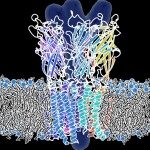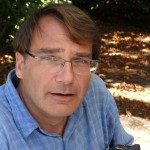Link to Pubmed [PMID] – 7892175
Link to HAL – Click here
Link to DOI – 10.1002/prot.340200307
Proteins. 1994 Nov;20(3):264-78.
Hydrophobic interactions are believed to play an important role in protein folding and stability. Semi-empirical attempts to estimate these interactions are usually based on a model of solvation, whose contribution to the stability of proteins is assumed to be proportional to the surface area buried upon folding. Here we propose an extension of this idea by defining an environment free energy that characterizes the environment of each atom of the protein, including solvent, polar or nonpolar atoms of the same protein or of another molecule that interacts with the protein. In our model, the difference of this environment free energy between the folded state and the unfolded (extended) state of a protein is shown to be proportional to the area buried by nonpolar atoms upon folding. General properties of this environment free energy are derived from statistical studies on a database of 82 well-refined protein structures. This free energy is shown to be able to discriminate misfolded from correct structural models, to provide an estimate of the stabilization due to oligomerization, and to predict the stability of mutants in which hydrophobic residues have been substituted by site-directed mutagenesis, provided that no large structural modifications occur.

